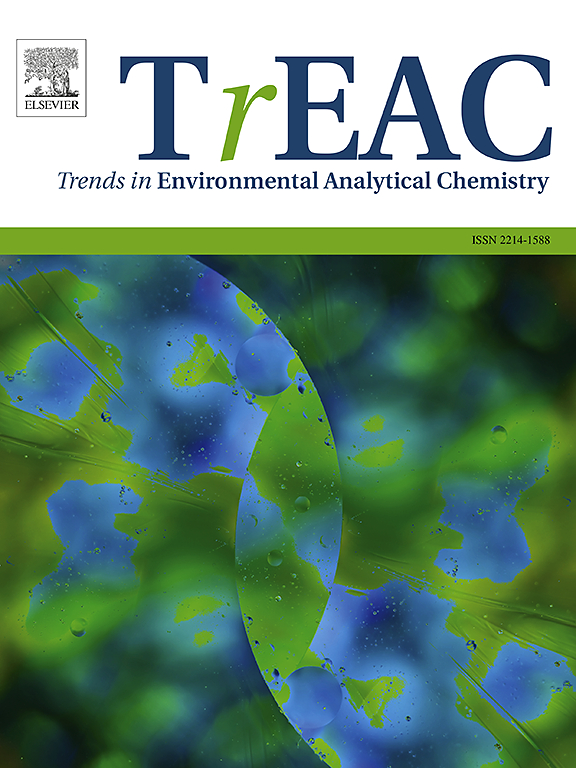Analytical chemistry in the era of sustainability: evaluating tools and challenges for a greener future
IF 13.4
2区 化学
Q1 CHEMISTRY, ANALYTICAL
引用次数: 0
Abstract
Analytical chemistry plays a crucial role in environmental monitoring, yet its own practices contribute to environmental degradation. To address this paradox, the emergence of the concepts of Green Analytical Chemistry (GAC), White Analytical Chemistry (WAC) and Green Sample Preparation (GSP) has led to the use of tools to evaluate analytical methods. Various tools have been developed to assess the environmental impact of analytical methods, including HPLC-EAT, AES, AMVI, GAPI, AMGS, RGB model and its evolutions, AGREE, AGREEprep, HEXAGON, LCA, SPMS and BAGI. They differ in their scope, assessment criteria, and methodological approach, from qualitative scoring systems to quantitative assessments. This review critically compares these tools, highlighting their strengths and limitations in evaluating sustainability across different stages of the analytical process. Particular attention is given to the assessment of chemical hazards, energy consumption, and impact quantification. The need for standardized, comprehensive, and accessible methodologies is emphasized to guide the transition toward truly sustainable analytical practices.
可持续发展时代的分析化学:评估绿色未来的工具和挑战
分析化学在环境监测中发挥着至关重要的作用,但其自身的实践却导致了环境的恶化。为了解决这一悖论,绿色分析化学(GAC)、白色分析化学(WAC)和绿色样品制备(GSP)概念的出现导致使用工具来评估分析方法。已经开发了各种工具来评估分析方法的环境影响,包括HPLC-EAT, AES, AMVI, GAPI, AMGS, RGB模型及其演变,AGREE, AGREEprep, HEXAGON, LCA, SPMS和BAGI。从定性评分系统到定量评估,它们在范围、评估标准和方法方法上有所不同。这篇综述对这些工具进行了批判性的比较,强调了它们在评估分析过程不同阶段的可持续性方面的优势和局限性。特别注意对化学品危害、能源消耗和影响量化的评估。强调需要标准化、全面和可访问的方法,以指导向真正可持续的分析实践的过渡。
本文章由计算机程序翻译,如有差异,请以英文原文为准。
求助全文
约1分钟内获得全文
求助全文
来源期刊

Trends in Environmental Analytical Chemistry
Chemistry-Analytical Chemistry
CiteScore
21.20
自引率
2.70%
发文量
34
审稿时长
44 days
期刊介绍:
Trends in Environmental Analytical Chemistry is an authoritative journal that focuses on the dynamic field of environmental analytical chemistry. It aims to deliver concise yet insightful overviews of the latest advancements in this field. By acquiring high-quality chemical data and effectively interpreting it, we can deepen our understanding of the environment. TrEAC is committed to keeping up with the fast-paced nature of environmental analytical chemistry by providing timely coverage of innovative analytical methods used in studying environmentally relevant substances and addressing related issues.
 求助内容:
求助内容: 应助结果提醒方式:
应助结果提醒方式:


